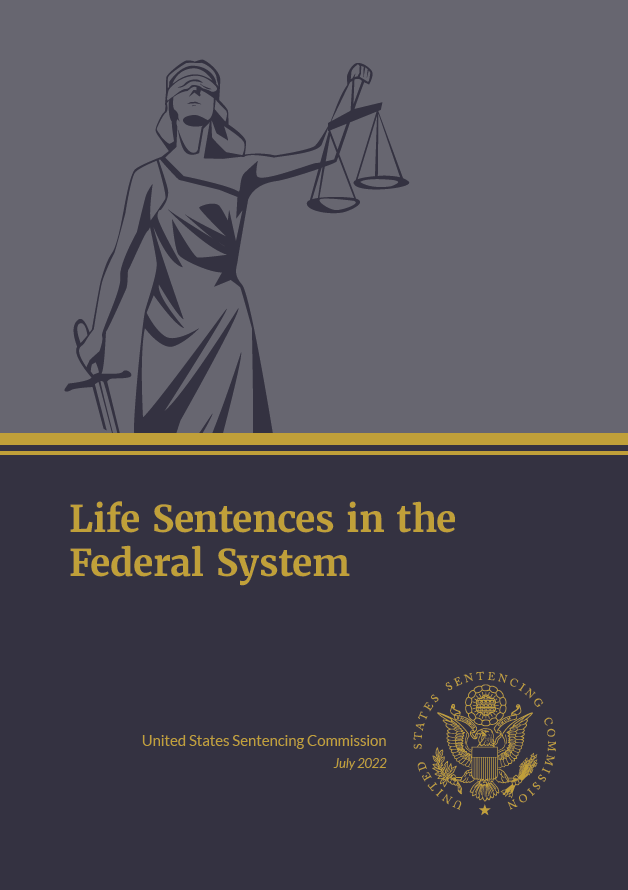Summary
(Published July 26, 2022) There are numerous federal criminal statutes authorizing a sentence of life as the maximum sentence allowed, such as for offenses involving drug trafficking, racketeering, and firearms crimes. While convictions under these statutes are common, sentences of life imprisonment are rare, accounting for only a small proportion of all federal offenders sentenced.
In February 2015, the Commission released Life Sentences in the Federal Criminal Justice System, examining the application of life sentences by federal courts during fiscal year 2013. Using data from fiscal years 2016 through 2021, this report updates and augments the Commission’s previous findings by examining the offenses that led to the life sentences imprisonment imposed, along with offender demographics, criminal histories, and victim-related adjustments.
Key Findings
Offenders Sentenced to Life Imprisonment
-
During fiscal years 2016 through 2021, there were 709 federal offenders sentenced to life imprisonment, which accounted for 0.2 percent of the total federal offender population.
-
Almost half (48.7%) of offenders sentenced to life imprisonment were convicted of murder.
-
Approximately half (47.5%) of offenders sentenced to life imprisonment were found to either have possessed a weapon in connection with their instant offense or were convicted under 18 U.S.C. § 924(c)—for possession or use of a firearm in furtherance of a crime of violence or drug trafficking crime. This is almost five times the rate for offenders who were sentenced to less than life imprisonment (9.8%).
-
Nearly one-third (31.4%) of offenders sentenced to life imprisonment received an aggravating role enhancement as an organizer, leader, manager, or supervisor in the offense, which is approximately eight times higher than those sentenced to less than life imprisonment (4.2%).
-
Offenders sentenced to life imprisonment qualified as repeat and dangerous sex offenders in 11.8 percent of cases, in comparison to 0.6 percent of offenders sentenced to less than life imprisonment.
-
The trial rate of offenders sentenced to life imprisonment was 75.6 percent, which was over thirty times higher than the 2.3 percent trial rate for all other federal offenders.
- There were 799 offenders sentenced to de facto life imprisonment, which accounted for 0.2 percent of the total federal offender population.
- Half (50.6%) of offenders sentenced to de facto life imprisonment were convicted of sexual abuse.
- One-third (33.2%) of offenders sentenced to de facto life imprisonment were found to either have possessed a weapon in connection with their instant offense or were convicted under 18 U.S.C. § 924(c)—for possession or use of a firearm in furtherance of a crime of violence or drug trafficking crime.
- More than one-in-seven (15.4%) offenders sentenced to de facto life imprisonment received an aggravating role enhancement as an organizer, leader, manager, or supervisor in the offense.
- Offenders sentenced to de facto life imprisonment qualified as repeat and dangerous sex offenders in 39.4 percent of cases.
- The trial rate of offenders sentenced to de facto life imprisonment was 39.4 percent.


